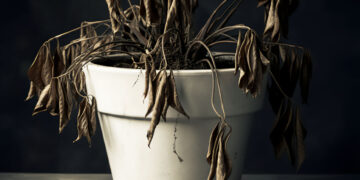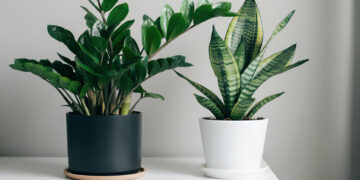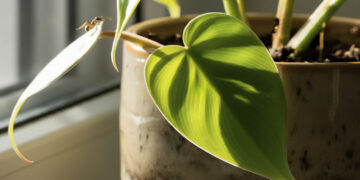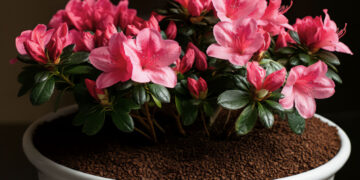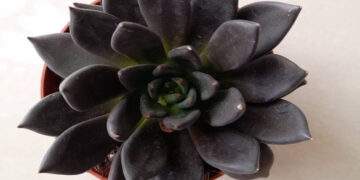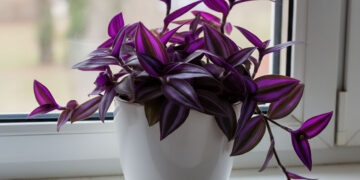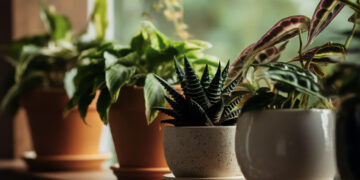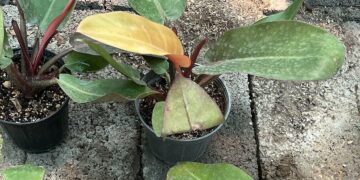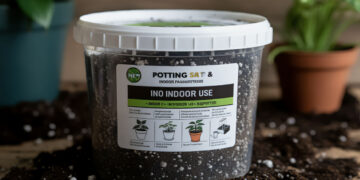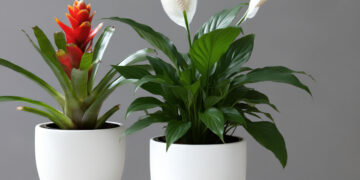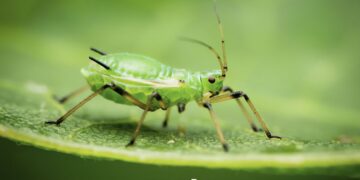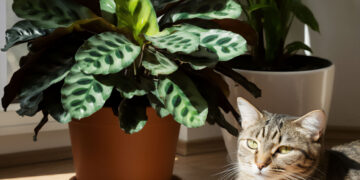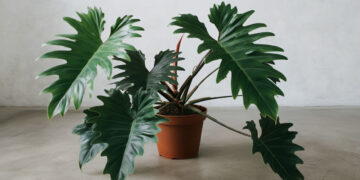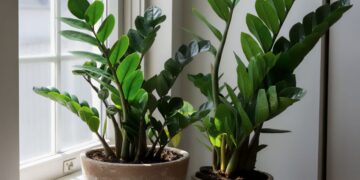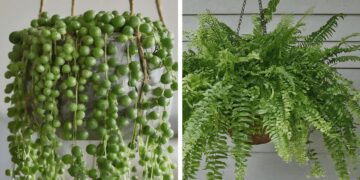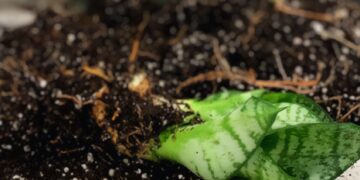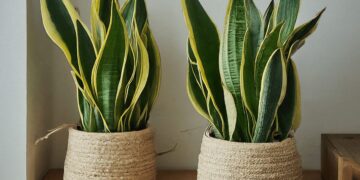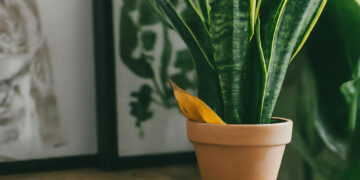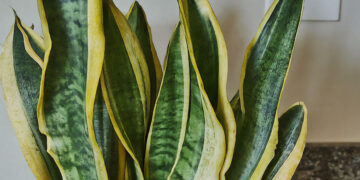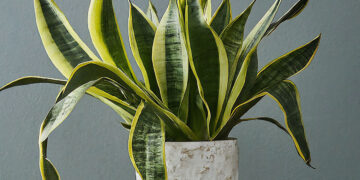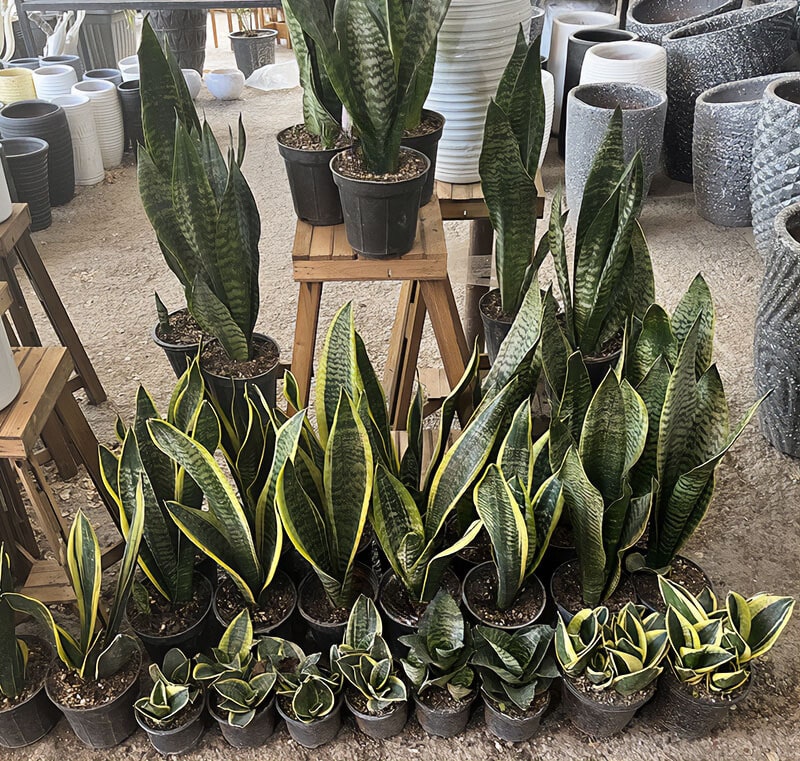
Here, I would like to introduce eight flagship types of snake plants to help you decide which is best for you.
How Many Types of Snake Plants Exist in the World?
The snake plant, also called Sansevieria, has more than 70 known plant species worldwide. I can say that the secret of the snake plant’s popularity among indoor and outdoor gardeners is its diversity. So you may have seen the snake plant in different colors, sizes, and shapes with unique features.
1. Sansevieria Trifasciata ‘Laurentii’ (Mother-in-Law’s Tongue)
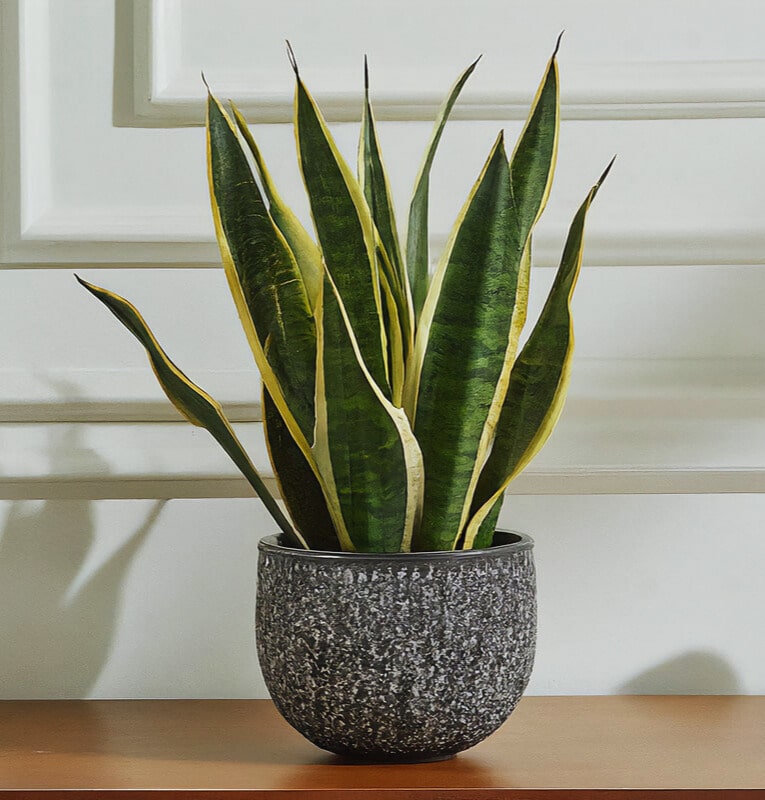
It might be interesting to know that the Laurentii was first seen in West Africa, specifically the region of Nigeria and east to the Congo, and was called in honor of Raimondo di Sangro, Prince of Sansevero.
Unsurprisingly, long, dark green leaves with bright green horizontal stripes and yellow edges attracted natives.
Because it purifies the air well, it is suitable for offices and places with high traffic and near desks. Still, if you want, you can have a mother-in-law tongue in your living room and even bedroom with a vertical design.
Care tips
Pay attention to the snake plant’s light, snake plant soil and fertilizer, and snake plant watering during the growing season. In that case, it grows two to three inches taller monthly and can finally reach 3 to 4 feet. I must say that this type of snake plant should be watered every two to four weeks.
2. Sansevieria Trifasciata ‘Zeylanica’ (Ceylon Bowstring Hemp)
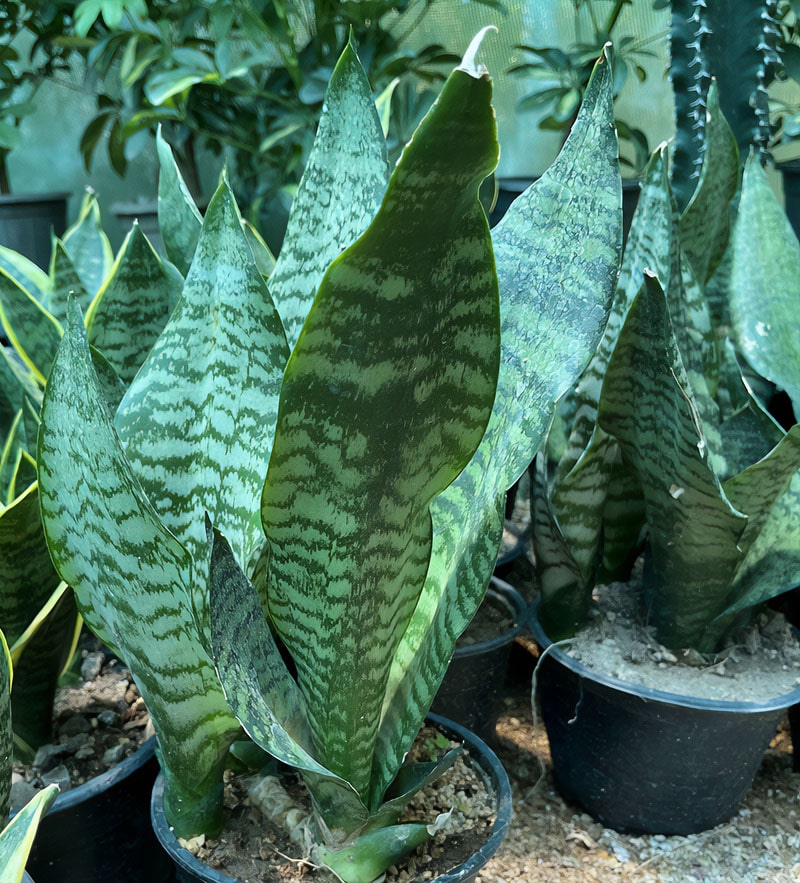
Like Laurentii, Zeylanica was grown for the first time in West Africa. It is fascinating that the dark green leaves with wavy, horizontal, lighter green stripes are so complex and fibrous that they were used to make bowstrings and other cordage many years ago. But now we know that this type of snake plant, which grows indoors and outdoors, helps improve air quality.
Ceylon Bowstring Hemp has no problem with high humidity, so I put one in the bathroom. However, you can put it in kitchens, bedrooms, and living rooms.
Care tips
Allow me to recommend checking snake plant light requirements, snake plant watering, snake plant fertilizer, and soil to see if the height of your Zeylanica can reach two or three feet after a while. I should say that don’t water it more than once every two or three weeks.
3. Sansevieria Cylindrica (African Spear Plant)
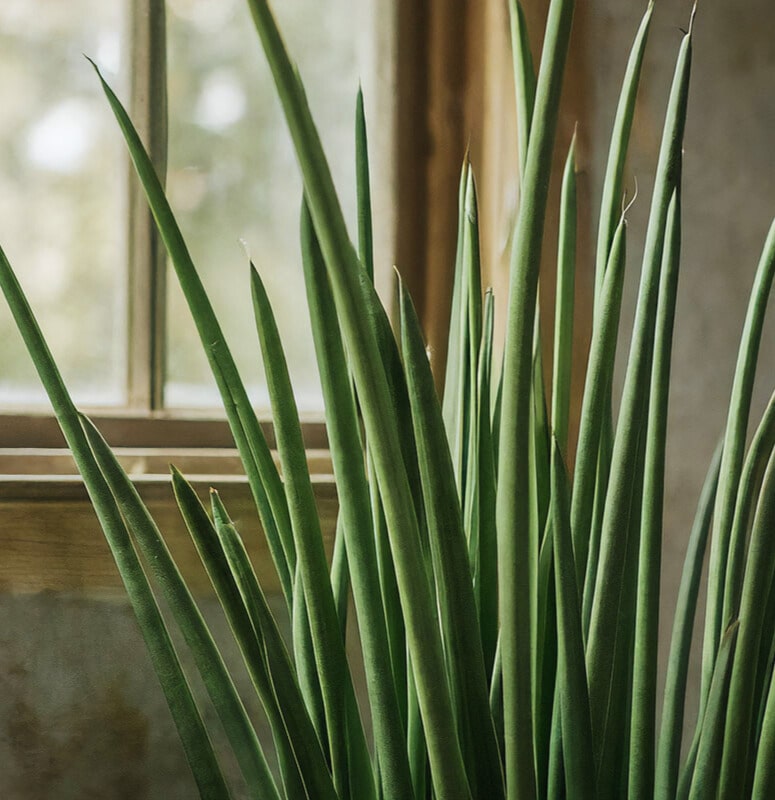
Imagine you are a big fan of minimalist and modern styles. In that case, a Sansevieria Cylindrica with Cylindrical, upright leaves often braided is a go-to choice for home and office decoration.
I understand it originates from Angola, Southern Africa, where the climate is dry and the soil is sandy.
Care tips
African Spear Plants are not sensitive and can manage difficult conditions well. First, you need to figure out how to be an expert in snake plant care, so check factors such as water, light, soil, and fertilizer. Water it every three to four weeks. It would be best to be patient because it grows slowly and takes a long time to reach several feet.
4. Sansevieria Moonshine (Moonshine Snake Plant)
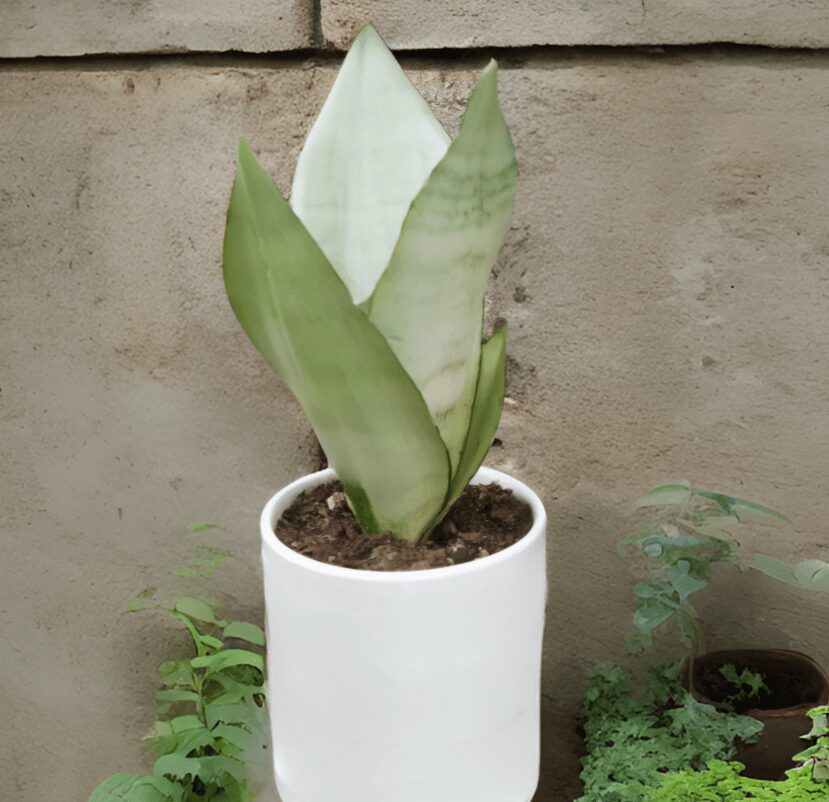
Suppose your plant has Silvery-green, broad, smooth leaves with a slight arch. In that case, it is a type of Sansevieria Moonshine not typically found in nature. Humans have selectively bred it.
This kind of snake plant has an element that will turn your home into a contemporary style. A Moonshine Snake Plant pot adds a modern feeling to the house with its unique bright foliage.
Care tips
Place your Sansevieria Moonshine plant in a bright and indirect light place, have regular soil and fertilization, and water it every two to four weeks so that it grows well. Although it has an average growth, it can reach two feet.
5. Sansevieria Hahnii (Bird’s Nest Snake Plant)
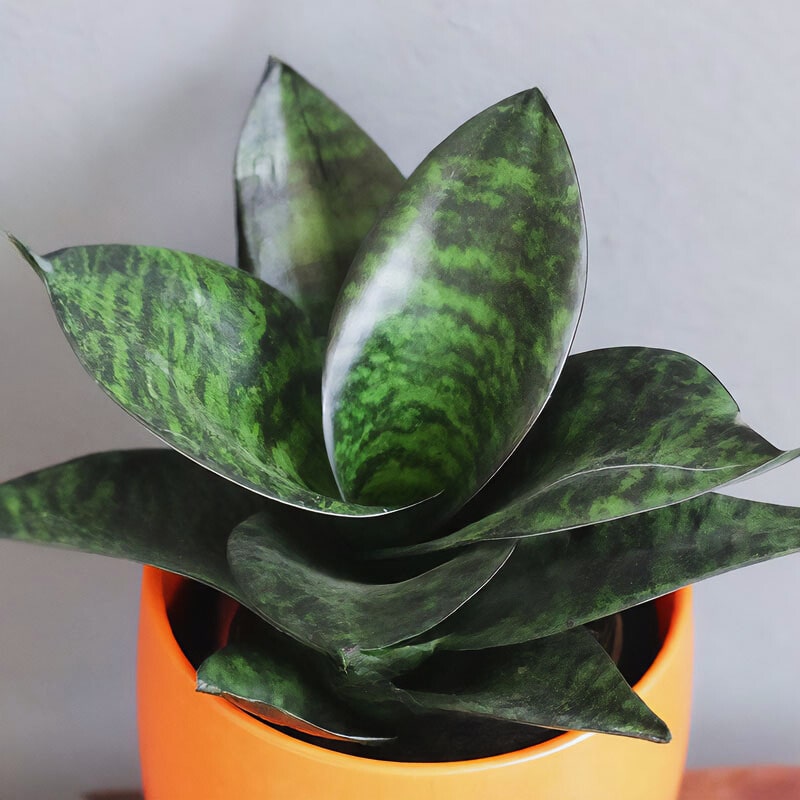
If you like to put a small plant on your desk or the shelves of your bedroom, I recommend Sansevieria Hahnii. This dwarf plant is a natural mutation of Sansevieria trifasciata and has rosette-shaped, dark green leaves with horizontal silver-green stripes.
If I recall correctly, the discovery of this plant goes back to a nursery in New Orleans in the 1940s. Honestly, I thank Paul Hahnii for discovering this popular houseplant so that we can enjoy its beauty and benefits.
Care tips
Contrary to their small shape, Bird’s Nest Snake Plants are stubborn and cope well with low light. They grow slowly and continuously, and if they are under ideal care conditions, for example, enough light, suitable soil, regular fertilization, and watering every two to three weeks, they can reach 6 to 8 inches.
6. Sansevieria Masoniana (Whale Fin Snake Plant)
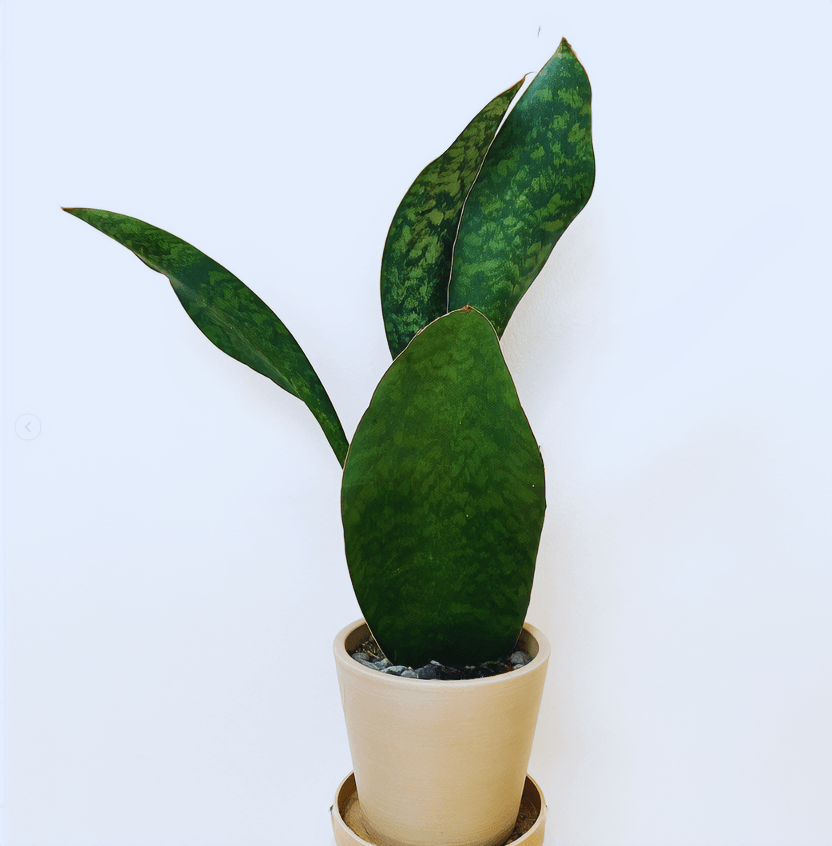
Whale Fin Snake Plants Make A Bold Statement for your house. This snake plant is famous for its large, paddle-shaped leaves with green and dark green spots.
It is native to the Democratic Republic of the Congo in Central Africa. It is usually placed in large pots at the entrance of large halls And can purify the air well.
Care tips
You can help your houseplant grow with monthly fertilization, low watering, well-drained soil, and medium-bright light during the growing season. Although It grows slowly, eventually it can reach three feet.
7. Sansevieria Black Coral (Black Coral Snake Plant)
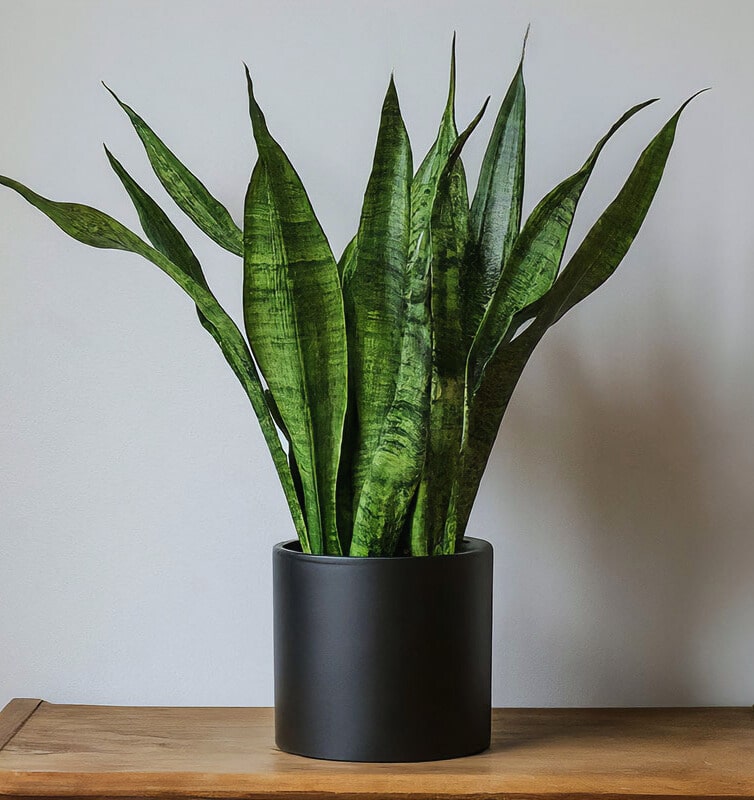
Delicate and bright stripes on almost black-green leaves guide us in identifying Sansevieria Black Coral, which creates a striking visual impact in your house and improves air quality, making it easier for you to breathe.
I didn’t find the exact breeding history, but I can say that it is a selective form of Sansevieria trifasciata.
Care tips
It does not require strict care. Like other varieties, it can grow up to 3 feet with medium bright light, soil, fertilization, watering every two to four weeks and, let soil dry out between two waterings.
8. Sansevieria Kirkii (Star Sansevieria)
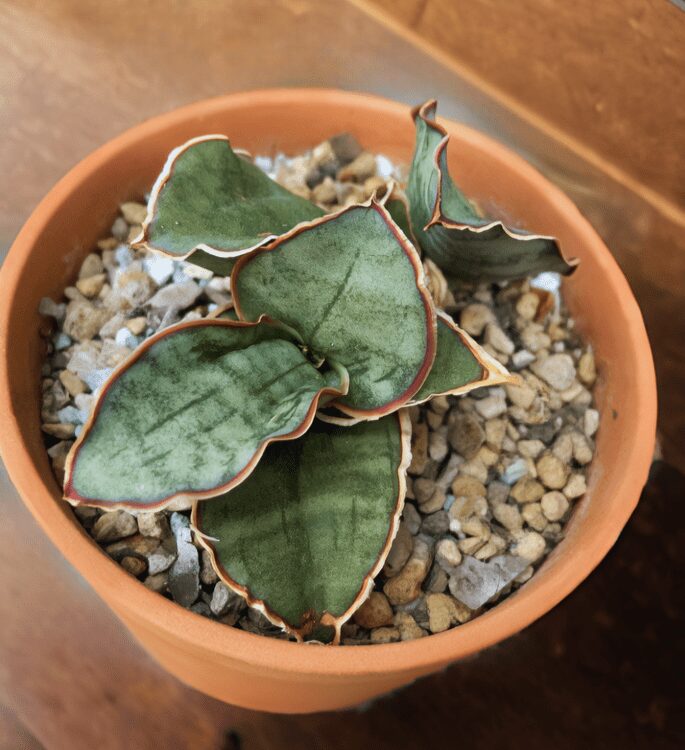
Sansevieria Kirkii, with mottled leaves full of green and white spots and wavy edges, has a strange appearance and hardy nature. Moreover, it purifies the air; you can keep it in bedrooms, living rooms, and office spaces.
In the 19th century, Sir John Kirk, a Scottish botanist, discovered Star Sansevieria in his travels to East Africa, specifically the region around Tanzania and Kenya.
Care tips
If you have one of Star Sansevierias at home, it is better to know that It is usually two to three feet tall and has low growth. Sansevieria kirkii prefers indirect light and rarely needs watering. Remember the soil with proper drainage and fertilization during the growing season.
Other Notable Snake Plant Varieties
In addition to the eight essential species, I introduce you to some rare but popular varieties worldwide, for example, Sansevieria’ Silver Queen, Sansevieria Patens, Sansevieria Ehrenbergii (Blue Sansevieria), Sansevieria’ Bantel’s Sensation’, Sansevieria’ Cleopatra,’ Sansevieria ‘Congo,’ Sansevieria ‘Francisii,’ Sansevieria ‘Samurai,’ Sansevieria ‘Twisted Sister’ and
-Sansevieria Trifasciata ‘Black Gold’
It is another form of Sansevieria trifasciata that has leaves with yellow edges.
-Sansevieria Trifasciata ‘Futura Robusta’
It is a compact model of Sansevieria trifasciata with distinctive silver-green foliage produced by a selective method.
-Sansevieria Trifasciata ‘Golden Hahnii’
It is a natural mutation of Hahnii, which is limited in growth and has vibrant yellow edges.
Finally, by exploring the geographical diversity and exciting history, you can understand their long journey from their original habitat to your home.
sources:
Do you have any questions or experiences to share that could help me and other readers? Please comment below. Your insights are invaluable.
